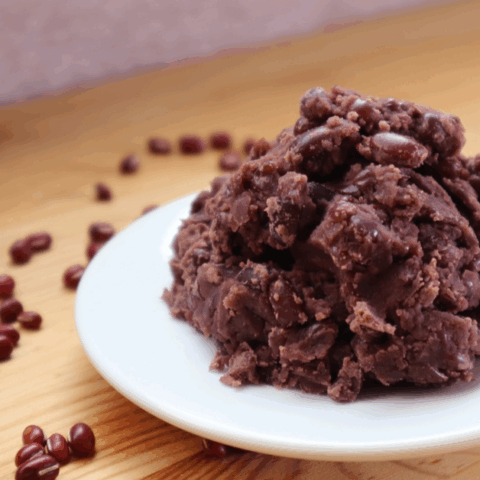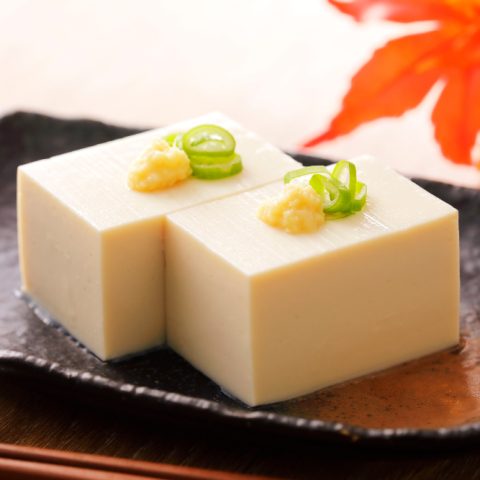
Aichi Prefecture has a local gourmet called “kishimen,” which has been beloved in the region since ancient times. Unlike Japan’s famous ramen or soba, kishimen refers to wide and flat noodles that are thinner than udon noodles and have been cherished in Aichi. This post will delve into the history, eating customs, and recommended restaurants for Kishimen.

Cold Kishimen – Photo Credit: まるう
What is Kishimen?
Kishimen noodles, characterized by their thinness (1mm thick and 8mm~ wide), are said to have originated from the flat udon noodles that were a specialty of Imogawa (now Kariya City, Aichi Prefecture) during the Edo period. Additionally, the local food called “Himokawa udon” in Kiryu City, Gunma Prefecture originated from the dialect language of the Imogawa area, which spread throughout Aichi as a regional dish. Afterward, the noodles came to Nagoya as “kishimen.”
Despite their real origin in Kariya City, Doesn’t it seem odd that Nagoya became more renowned for kishimen?
Well, one reason for this is Nagoya residents’ thriftiness. Kishimen, which requires less boiling time than regular udon, became a favorite due to its quick preparation and economically efficient cooking process.
Furthermore, kishimen is typically enjoyed by coating the thin noodles with tamari soy sauce and a rich fish stock made from Muroaji. This bold flavor perfectly suits the preferences of Aichi residents, especially among those who preside in Nagoya.
The Muroaji broth offers a uniquely strong flavor distinct from traditional bonito broth. Moreover, tamari soy sauce is made mostly from soybeans rather than a soy-wheat blend, creating a deeply flavorful broth with hints of miso.

Japan size map – Photo Credit: Chisato by Canva
By the way, did you know that Japan appears small on maps but is actually quite large? Like European countries with diverse cuisines and cultures, Japanese regions also offer distinct tastes and culinary styles.
The Tohoku, Kanto, and Kyushu areas are known for their strong flavors, while Kansai prefers much more subtle tastes. Interestingly, these differences are often attributed to historical factors. For instance, in the pre-Edo period, the Kanto region had many blue-collar workers, which led to the popularity of heavily seasoned dishes to replenish salt and minerals lost through sweat.
On the other hand, with cities like Kyoto, Kansai was a center of Japan. Here, the upper class didn’t need to perform manual labor, leading to a healthy food culture focused on delicately flavored dishes. From my personal experience, I grew up in Saitama, but I prefer sweet dark soy sauce for sashimi because of my mother’s influence from Kumamoto. Thus, each region in Japan offers its own unique culinary experience. If you ever visit Japan, please try the local dishes from each of the country’s 47 prefectures!!

Photo Credit: きぃきぃちゃん
Typically, Kishimen noodles are in a Muroaji fish stock soup with Tamari soy sauce, presented with sweet and spicy deep-fried tofu, leafy greens like spinach, chopped green onions, and bonito flakes. If you add the special red kamaboko fish cake found in Nagoya, it will be even more traditional.
In addition to enjoying warm Kishimen, there’s also a way to enjoy it cold, known as “Koro,” where both the noodles and the soup are chilled. This makes it a refreshing option during the summer when appetites decrease. While Kishimen shares similarities with other noodle varieties, such as chewy udon and soft houtou, it has its own unique texture – smooth yet firm. However, its cooking methods are quite similar to those of typical udon, making it easy to prepare at home.
You can find Kishimen noodles available for purchase in supermarkets, including chilled, dried, and frozen options, but making them from scratch is also a wonderful way to experience Japanese culture. I’ll provide a recipe, so be sure to try it!

Homemade Udon – Photo Credit: ふぉと忍者
How to make homemade Kishimen??
First, prepare 400g of wheat flour, which is enough for 4-5 servings.
1. In a bowl, mix salt and water until dissolved. As a guide, use 22g of salt and 178g of water for April to June, 24g of salt and 176g of water for July to October, and 20g of salt and 180g of water for November to March, totaling 200g.
2. Put the wheat flour in a large bowl and make a hole in the center. Add the salt water bit by bit and mix.
3. Mix everything evenly. After thorough mixing, the color of the flour will change from pure white to a slightly yellowish crumbly texture in about 5 minutes.
4. Gather the crumbly wheat flour into a lump.
5. Next, put the rounded dough in a clean plastic bag and knead with your feet for about 5 minutes.
6. Remove the dough from the bag and roll it like a swissroll cake.
7. Add the flour to the dough to prevent it from sticking to the plastic, then return it to the bag. Knead it again for 5 minutes, as before.
8. Fold the rectangular, flattened dough into thirds to form a square.
9. Similarly, Add the flour to the dough to prevent it from sticking to the plastic, return it to the bag, and knead for 3 minutes this time. Then, you’ll have a square dough of about 25cm on each side.
10. Roll the dough into a ball, tucking the edges inward as you do so. Create a beautiful circular shape, then place it in the plastic bag and let it rest at room temperature for 30 minutes to 1 hour.
11. Remove the dough from the plastic bag and flatten it to about 2cm thick. Then, roll it out with a stick 8-10 times until it’s 1mm thick.
12. Pour the flour into the stretched dough, fold it in half, and then fold it in a mountain shape, as shown in the picture below.
13. Cut both ends of the dough to about 8mm~ wide. Once done, shake off the flour from the noodles (8~10mm recommended).
Now, your noodles are ready. All that’s left is to boil them.

Step 12 – Photo Credit: zousan
While the traditional way of eating Kishimen in Muroaji and Tamari soy sauce-based soup is already good, being in Japan provides the perfect opportunity to indulge in local ingredients and savor the sights, scents, flavors of the season, and culture at the same time.
5 Kishimen dishes with a Japanese touch
Here, I’ll introduce several Kishimen using various ingredients for you to try out in Japan.

Sudachi Kichimen – Photo Credit: Lauren Shannon
Sudachi Kishimen
This dish is Kishimen with Sudachi, a Japanese citrus fruit known for its refreshing tanginess. It pairs well with the bonito broth, creating a delicious combination. I am pretty sure that you will drink all the soup in a second as it is super tasty.
Sudachi is mainly grown in Tokushima Prefecture, accounting for over 90% of the national production. Additionally, it is known to have health benefits, keeping the blood flowing smoothly and reducing swelling and high blood pressure. If you’re in Japan, don’t miss the chance to try Kishimen with Sudachi!!
The dish in the photo above is from Hōsa. A cold soup with Sudahi is absolutely perfect for cooling off in the summer.

Yaki Miso Futo Kishimen – Photo Credit: ねこあるき
Yaki Miso Futo Kishimen (Grilled Miso Thick Kishimen)
This dish consists of kishimen noodles with a red miso sauce, pork, green peppers, and a raw egg. Mixing the egg yolk adds a creamy taste, enhancing the miso’s rich flavor. Since it is a simple sauce made with red miso, mirin, fish stock powder, and sugar, cooking at home is easy! Please try it!!
On a different note, if you are looking for good quality mirin, I highly recommend trying it from Tomonoura city, Hiroshima prefecture. You can check more details here. Moreover, if you plan to visit Nagoya, you can eat the dish in the photo in Asahiya!

Kishibonara – Photo Credit: バック730
The next one is “Kishibonara,” a fusion of kishimen and carbonara. The smooth texture of flat kishimen offers a unique experience compared to pasta. Additionally, it becomes incredibly delicious when combined with creamy sauce, as the noodles are wide, and you will get a lot of taste. The essential point is to put a fresh, sun-yellow Japanese egg yolk on top and mix it.
Moreover, some people also add Kimchi, which has a very good reputation for being tasty. Therefore, if you are interested in a unique Kishimen dish, please try to cook it, post a photo on your Instagram story, and tag our account. We are always happy to see our audience enjoying Japanese culture!

Sukiyaki Kishimen – Photo Credit: ciupen
Next, we have “Sukiyaki Kishimen.” Sukiyaki is a popular Nabe (Japanese hot pot dish) made with simmering ingredients like beef, green onions, edible chrysanthemum, and fried tofu in a soup based on soy sauce, sugar, and sake. The mildly sweet soup has a unique, addictive taste, especially when paired with a raw egg.
In Japan, it’s common to use the leftover broth from Nabe to make a finishing dish called “Shime,” which includes rice, udon noodles, or ramen. So, if you ever have the chance to enjoy sukiyaki at home, I highly recommend trying it with Kishimen to soak up all the delicious flavors of the ingredients. You can also learn more about sukiyaki in detail here.

Curry Kishimen – Photo Credit: 天晴小號
The last one we explain is Curry Kishimen. In general, Japanese people love curry so much. It’s a classic menu item in schools, and if you ask students what their favorite dish is, most would choose curry for sure!!! While it’s quite different from curries in India, Sri Lanka, or Nepal, Japanese curry has evolved in various ways since the early Meiji period and has become a delicious home-cooked meal.
You can find curry roux everywhere, even in convenience stores, making it easy to prepare by just adding it to a pot. Since it’s so simple yet delicious, it’s definitely worth a try, right? Also, adding Kishimen to curry soup allows you to enjoy two types of Japanese cuisine in one meal, killing two birds with one stone.
So, next time you find curry roux, you should cook Kishimen curry!!
Where to try Kishimen in Tokyo?
1. Misonikomin
“Misonikomin” is a restaurant that opened eight years ago. The owner has an interesting background, being from an udon-making family with traditions that have been passed down for three generations in Kariya City, Aichi Prefecture. They blend Haccho miso, locally produced red miso from Kariya, and white miso to create their own original smooth soup. Moreover, by using broth made from kombu, shiitake mushrooms, and mackerel flakes, the soup reflects an extremely delicate Japanese flavor. Additionally, in the evenings, customers can order rice for an extra 200 yen and enjoy it as a closing dish, “Shime,” by pouring egg and broth over it.
Address: https://maps.app.goo.gl/CX7FhMxdNNGq8m278
Website: https://misonikomin.net/
2. Tamacho Main Store Yaesu
Tamacho Main Store Yaesu is a local Nagoya cuisine specialty shop in Tokyo that offers various authentic Nagoya foods, not just Kishimen.
One must-try dish, especially in summer, is the “Ume Shirasu Kishimen” (Kishimen with Plum and Whitebait). The citric acid from the plum helps relieve summer fatigue and calcium absorption, making it delicious and a healthy choice. Considering Japan’s summers can feel like over 40 degrees, enjoy this dish in Tokyo for a healthier and more enjoyable trip!
Furthermore, for those who love whitebait, please check out Suruga City in Shizuoka Prefecture as well!
Address: https://maps.app.goo.gl/1iyEShGgB7DcVasR8
Website: https://www.sfpdining.jp/brand/tamacho/
3. Sotei
The next shop I’d like to introduce is a bit different from the others and offers a taste of Japan’s busy culture.
Sotei is located inside JR Ikebukuro Station’s central gate, offering standing style, soba and udon noodles. Moreover, their subtly sweet soup is delicious, making it a popular spot. Ikebukuro Station is always busy and crowded, and many customers visit Sotei during their short breaks to quickly grab a meal. Here, you can try the Tokyo-style Kishimen only in the Ikebukuro branch. So, while experiencing Japan’s busy culture, why not try Kishimen while you are waiting for your train? The shop can accommodate groups of 8 to 10 people, so be careful if you’re going with friends!
Address: https://maps.app.goo.gl/e4zPF1gjGozcmGAFA
Website: https://jt-s.net/shop_list/jr

Nagoya Kishimen – Photo Credit: くるるん
Today, we explored the history of Kishimen, how to cook it, and where to eat in Tokyo. According to JAS’s (Japanese Agricultural Standards) labeling quality standard for dried noodles, “Hiramen,” “Dried Hiramen,” “Kishimen,” or “Himokawamen” need to be more than 4.5mm in width and less than 2mm in thickness. Nagoya Kishimen is generally wider than the label rule of 8~10mm and has an attractive smooth and chewy texture. Additionally, It has various ways to eat and is tasty, both hot and cold, so please try or eat seasonal Kishimen dishes if you have a chance!!
Featured Photo Credit: mai36
If you come to Nagoya to try this regional specialty, don’t miss the chance to stay at the incredible Nikko Style Nagoya Hotel, our #1 accommodation recommendation in the city!
PIN THIS FOR LATER




